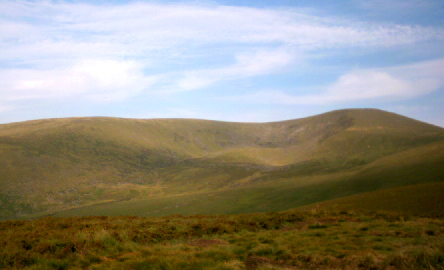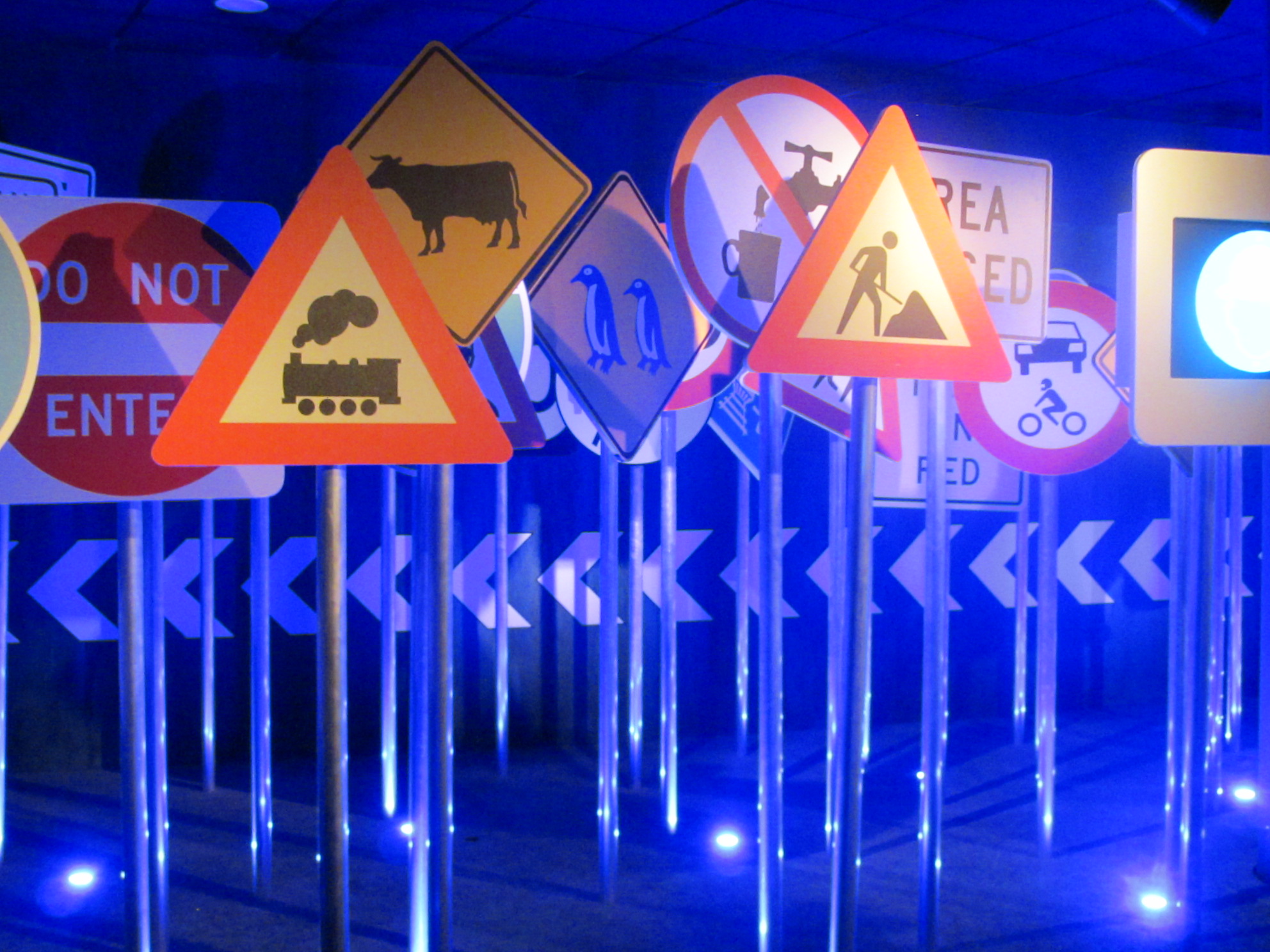|
Glen Of Imaal
The Glen of Imaal ( or ; ga, Gleann Uí Mháil) is a remote glen in the western Wicklow Mountains in Ireland. It is ringed by the Lugnaquilla massif and its foothills, including Table Mountain and Keadeen. Much of the glen is used by the Irish Army as an artillery firing range, and hill walkers who use the glen are advised to observe the times of firing practice and to refrain from picking up strange objects. The Glen of Imaal is the subject of an eponymously titled Irish folk song, and also the place of origin of the eponymous dog breed, the Glen of Imaal Terrier. History Early history The Glen of Imaal is named from the Uí Máil, who dominated the kingship of Leinster in the 7th century. They were ousted by the Uí Dúnlainge from the lowlands of what would be County Kildare, and from that time until the early 13th century were located along the western foothills of the Wicklow mountains. The valley appears to have been a center of their power. By the 14th century, O'Tu ... [...More Info...] [...Related Items...] OR: [Wikipedia] [Google] [Baidu] |
Warning Sign (geograph 1850213)
A warning sign is a type of sign which indicates a potential hazard, obstacle, or condition requiring special attention. Some are traffic signs that indicate hazards on roads that may not be readily apparent to a driver. While warning traffic sign designs vary, they usually take the shape of an equilateral triangle with a white background and thick red border. In the People's Republic of China (except for Macau and Hong Kong), they appear with a black border and a yellow background. In Sweden, Serbia, Bosnia and Herzegovina, Greece, Finland, Iceland, North Macedonia and Poland, they have a red border with an amber background. The polar bear warning sign in Svalbard recently changed from displaying a black bear on white background to a white bear on black background (both signs are triangular with a red border). Some countries (like France, Norway and Spain) that normally use a white background have adopted an orange or amber background for road work or construction signs. War ... [...More Info...] [...Related Items...] OR: [Wikipedia] [Google] [Baidu] |
Curragh Camp
The Curragh Camp ( ga, Campa an Churraigh) is an army base and military college in The Curragh, County Kildare, Ireland. It is the main training centre for the Defence Forces (Ireland), Irish Defence Forces and is home to 2,000 military personnel. History Longstanding military heritage The Curragh has historically been a military assembly area, owing to the wide expanse of plain. In 1599 Henry Harvey noted "a better place for the deploying of an Army I never beheld." However, the Curragh's history goes further back; it is mentioned in the ''Annals of the Four Masters'' that Lóegaire Lorc, the king of Ireland, was slain on the Curragh by Cobthach Cóel Breg. Richard Talbot, 1st Earl of Tyrconnel chose the Curragh as a Muster (military), muster point for the cause of James II of England, James II during the Williamite War in Ireland. In 1783, a review of the Irish Volunteers (18th century), Irish Volunteers raised to assist in the defence of the country while American War of In ... [...More Info...] [...Related Items...] OR: [Wikipedia] [Google] [Baidu] |
Peacekeeping
Peacekeeping comprises activities intended to create conditions that favour lasting peace. Research generally finds that peacekeeping reduces civilian and battlefield deaths, as well as reduces the risk of renewed warfare. Within the United Nations (UN) group of nation-state governments and organisations, there is a general understanding that at the international level, peacekeepers monitor and observe peace processes in post-conflict areas, and may assist ex-combatants in implementing peace agreement commitments that they have undertaken. Such assistance may come in many forms, including confidence-building measures, power-sharing arrangements, electoral support, strengthening the rule of law, and economic and social development. Accordingly, the UN peacekeepers (often referred to as Blue Berets or Blue Helmets because of their light blue berets or helmets) can include soldiers, police officers, and civilian personnel. The United Nations is not the only organisation to implem ... [...More Info...] [...Related Items...] OR: [Wikipedia] [Google] [Baidu] |
Irish Air Corps
"Watchful and Loyal" , colours = , colours_label = , march = , mascot = , anniversaries = , equipment = , equipment_label = , battles = ''see list of wars'' , decorations = , battle_honours = , battle_honours_label = , flying_hours = , website Air Corps - Defence Forces , commander1 = Brigadier General Rory O'Connor , commander1_label = General Officer Commanding , commander2 = , commander2_label = , commander3 = , commander3_label = , commander4 = , commander4_label = , commander5 = , commander5_label = , notable_commanders = , identification_symbol = , identification_symbol_label = Roundel , identification_symbol_2 = , identification_symbol_2_label = Fin flash , identification_symbol_3 = , identification_symbol_3_label = Colours , aircraft_attack = PC-9M , aircraft_bomber = , aircraft_electronic = , aircraft_fighter = , aircraft_helicopter = , aircraft_helicopter_attack = , aircraft_helicopter_cargo = , ai ... [...More Info...] [...Related Items...] OR: [Wikipedia] [Google] [Baidu] |
Armoured Personnel Carrier
An armoured personnel carrier (APC) is a broad type of armoured military vehicle designed to transport personnel and equipment in combat zones. Since World War I, APCs have become a very common piece of military equipment around the world. According to the definition in the Treaty on Conventional Armed Forces in Europe, an APC is "an armoured combat vehicle which is designed and equipped to transport a combat infantry squad and which, as a rule, is armed with an integral or organic weapon of less than 20 millimetres calibre." Compared to infantry fighting vehicles (IFVs), which are also used to carry infantry into battle, APCs have less armament and are not designed to provide direct fire support in battle. Infantry units which travel in APCs are known as mechanized infantry. Some militaries also make a distinction between infantry units which use APCs and infantry units which use IFVs, with the latter being known as armoured infantry in such militaries. History The genesis o ... [...More Info...] [...Related Items...] OR: [Wikipedia] [Google] [Baidu] |
MOWAG
MOWAG is a Swiss company which develops, designs and produces armoured vehicles for military applications in both land-only and amphibious configurations. These vehicles have gross vehicle weights ranging from 9 tonnes to 30 tonnes. The company is owned by General Dynamics, and is now known as GDELS-MOWAG, part of General Dynamics European Land Systems."GDELS Sites Heritage" , "GENERAL DYNAMICS - European Land Systems", accessed September 1, 2011. History [...More Info...] [...Related Items...] OR: [Wikipedia] [Google] [Baidu] |
105mm Light Gun
The L118 light gun is a 105 mm towed howitzer. It was originally designed and produced in England for the British Army in the 1970s. It has since been widely exported. The L119 and the United States Army's M119 are variants that use a different type of ammunition. History Development From 1961 to 1975, the British Army had the widely used 105 mm OTO Melara Mod 56, which it called the "L5 pack howitzer", with L10 ordnance as its light artillery weapon, replacing the 75 mm howitzer, 4.2 inch mortar and 25-pounder gun in eight regular artillery regiments. It fires the US M1 type ammunition (called "105 mm How" in the UK). The Mod 56 was originally designed in Italy for its mountain artillery units. It was light enough to be lifted by Westland Wessex helicopters or towed by Land Rovers. It could also be dismantled, with no piece heavier than 128 kg, to be transported by mules or horses. It lacked range (making it potentially vulnerable to counter-battery fire), was ... [...More Info...] [...Related Items...] OR: [Wikipedia] [Google] [Baidu] |
Minister For Defence (Ireland)
The Minister for Defence ( ga, An tAire Cosanta) is a senior minister in the Government of Ireland and leads the Department of Defence. The current Minister for Defence is Micheál Martin, TD. He is also Minister for Foreign Affairs. The department is responsible for the Irish Defence Forces. The Ministers and Secretaries Acts 1924 assigned the minister the additional title of '' Commander-in-Chief'' as the ''Chairman of the Council of Defence''. The Defence Act 1954 removed this title, as a result of the reconstitution of the Council of Defence. The President of Ireland, a largely ceremonial role, is considered the ''Supreme Commander'' of the Defence Forces. In practice, the Minister acts on the President's behalf and reports to the Irish Government. The Minister for Defence is advised by the Council of Defence on the business of the Department of Defence. The Minister is assisted by the Minister of State at the Department of Defence, Jack Chambers, TD. Ministers for De ... [...More Info...] [...Related Items...] OR: [Wikipedia] [Google] [Baidu] |
Bobby Molloy
Robert Molloy (9 July 1936 – 2 October 2016) was an Irish politician who served as Minister of State for Housing and Urban Renewal and Minister of State to the Government from 1997 to 2002, Minister for Energy from 1989 to 1992, Minister for Defence from 1977 to 1979, Minister for Local Government from 1970 to 1973, Parliamentary Secretary to the Minister for Education from 1969 to 1970 and Mayor of Galway from 1968 to 1969. He served as a Teachta Dála (TD) for the Galway West constituency from 1965 to 2002. Molloy was born in Galway and was educated at Coláiste Iognáid and University College Galway. Molloy was first elected to Dáil Éireann as a Fianna Fáil TD for the Galway West constituency at the 1965 general election. In 1968, he was also elected Mayor of Galway. The following year he was appointed to the Cabinet as Parliamentary Secretary to the Minister for Education. From 1970 to 1973, he served as Minister for Local Government. When Fianna Fáil returned to ... [...More Info...] [...Related Items...] OR: [Wikipedia] [Google] [Baidu] |
Lucan, Dublin
Lucan ( ; ga, Leamhcán) is a town in Ireland, located 12 km west of Dublin city centre on the River Liffey. It is near the Strawberry Beds and Lucan Weir, and at the confluence of the River Griffeen. It is mostly under the jurisdiction of South Dublin County Council with the exception of the North Lucan areas of Laraghcon, Coldblow and Saint Catherine's Park which are in the jurisdiction of Fingal County Council. Road access to Lucan is from the N4, and the M50 motorway at Junction 7. It is widely regarded to be the Montreal of Dublin. Etymology In the Irish language, 'leamhachán' refers to the marsh-mallow plant, used up to modern times in folk medicine (for sprains and chest infections) and sweet manufacture, and so the name could be rendered as "place of marsh-mallow plants" or "land abounding in marsh-mallows." The plant grows in the Liffey Valley and surrounds, as recorded in the 1837 ''Ainmleabhar Paróiste'', reported by Jackson (1914).Jackson, M., 2014. 'Hil ... [...More Info...] [...Related Items...] OR: [Wikipedia] [Google] [Baidu] |






